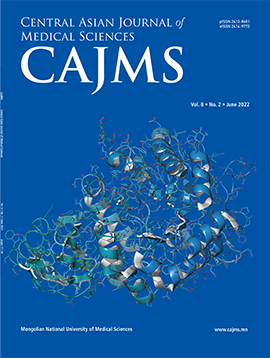Quantitative Serum HBsAg and M2BPGi Levels in Patients with Chronic Hepatitis D
DOI:
https://doi.org/10.24079/cajms.2016.02.007Keywords:
Hepatitis B, Chronic, Hepatitis D, Liver Fibrosis, Mac-2 Binding Protein, Human, Hepatitis B Surface AntigensAbstract
Objectives: Quantification of serum HBsAg has several clinical significances such as acting as a biomarker for the hepatitis D virus (HDV)-RNA level and necroinflammatory activity in HDV infection. The WFA+-M2BP is a new glyco-biomarker for liver fibrosis. The aim of this study was to compare the quantitative HBsAg and M2BPGi levels between groups of HBV infected patients with or without HDV infection. Methods: Totally, 112 consecutive HBsAg carriers with or without HDV infection (median age 36 vs 38) were enrolled in the study. Serum HBsAg and M2BPGi levels were measured using commercial tests. Results: Mean qHBsAg concentrations were 3.8 ±0.6 log IU/mL and 3.5 ±0.8 log IU/mL in the HDV positive and HDV negative HBsAg carriers, respectively (p = 0.02). Yet 45 patients out of 56 HDV positive patients have HBsAg level >2000 IU/mL whereas only 33 patients in the HBV mono infected group had concentrations this high. The mean M2BPGi was a 1.2 cut-off index (COI) in the HDV negative group vs. 2.1 COI in the HDV positive group (p<0.001). Conclusion: The qHBsAg level was higher in HDV positive patients compared with HDV negative subjects. But qHBsAg levels were higher in the HBeAg positive subjects despite the presence of HDV infection. The mean M2BPGi value in the HDV positive group was higher than in HDV negative subjects.
Downloads
200
Downloads
Published
How to Cite
Issue
Section
License
Copyright (c) 2016 Mongolian National University of Medical Sciences

This work is licensed under a Creative Commons Attribution-NonCommercial 4.0 International License.




